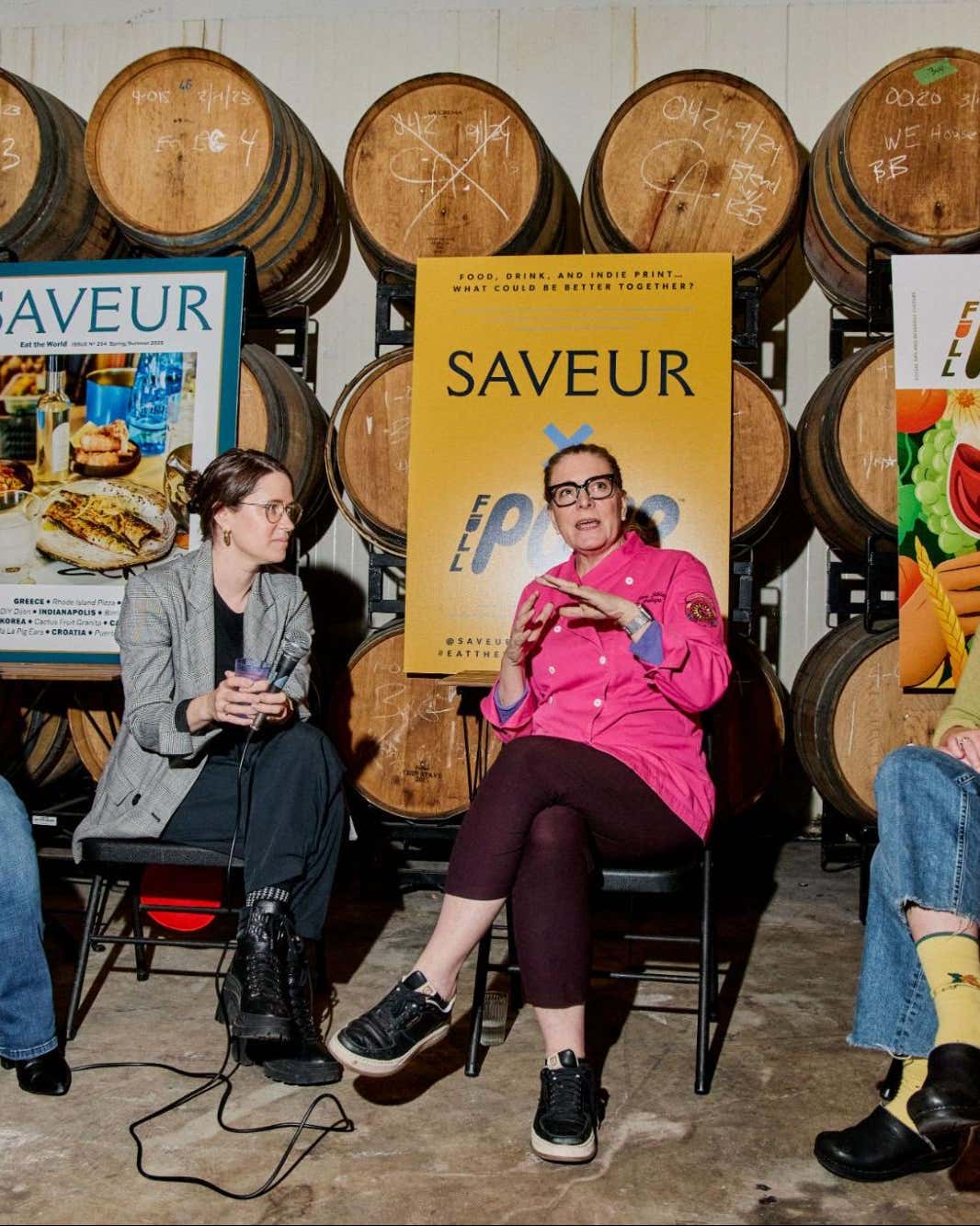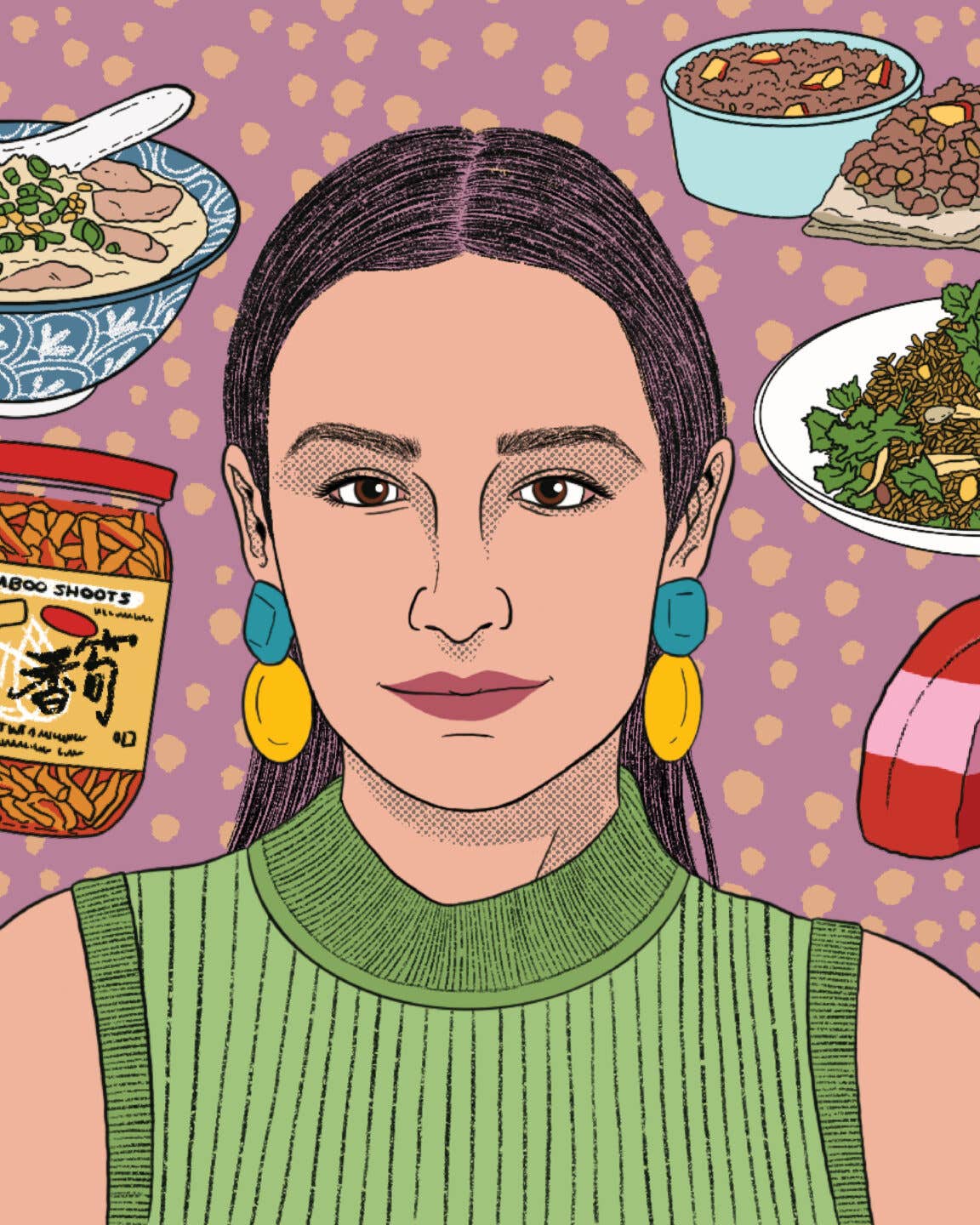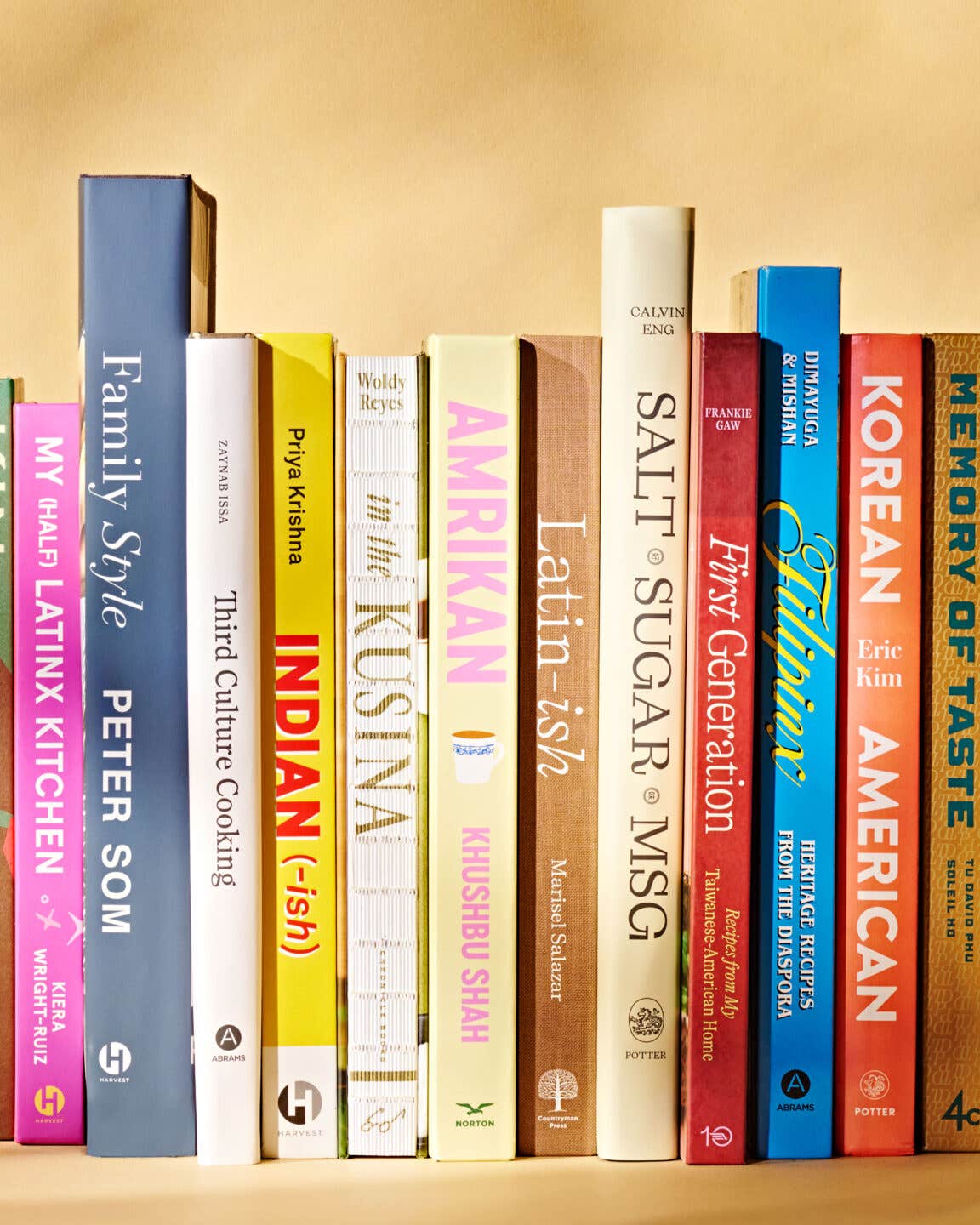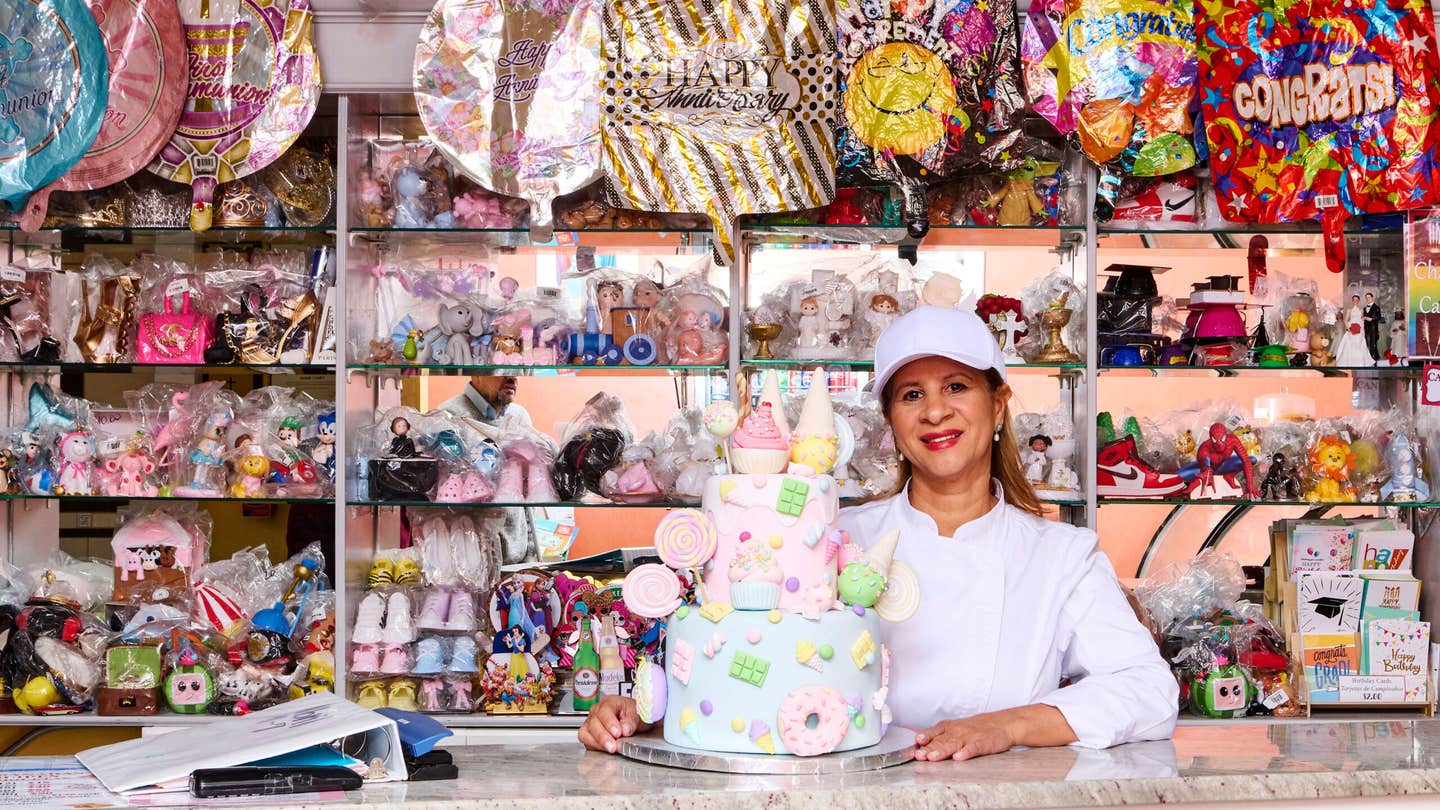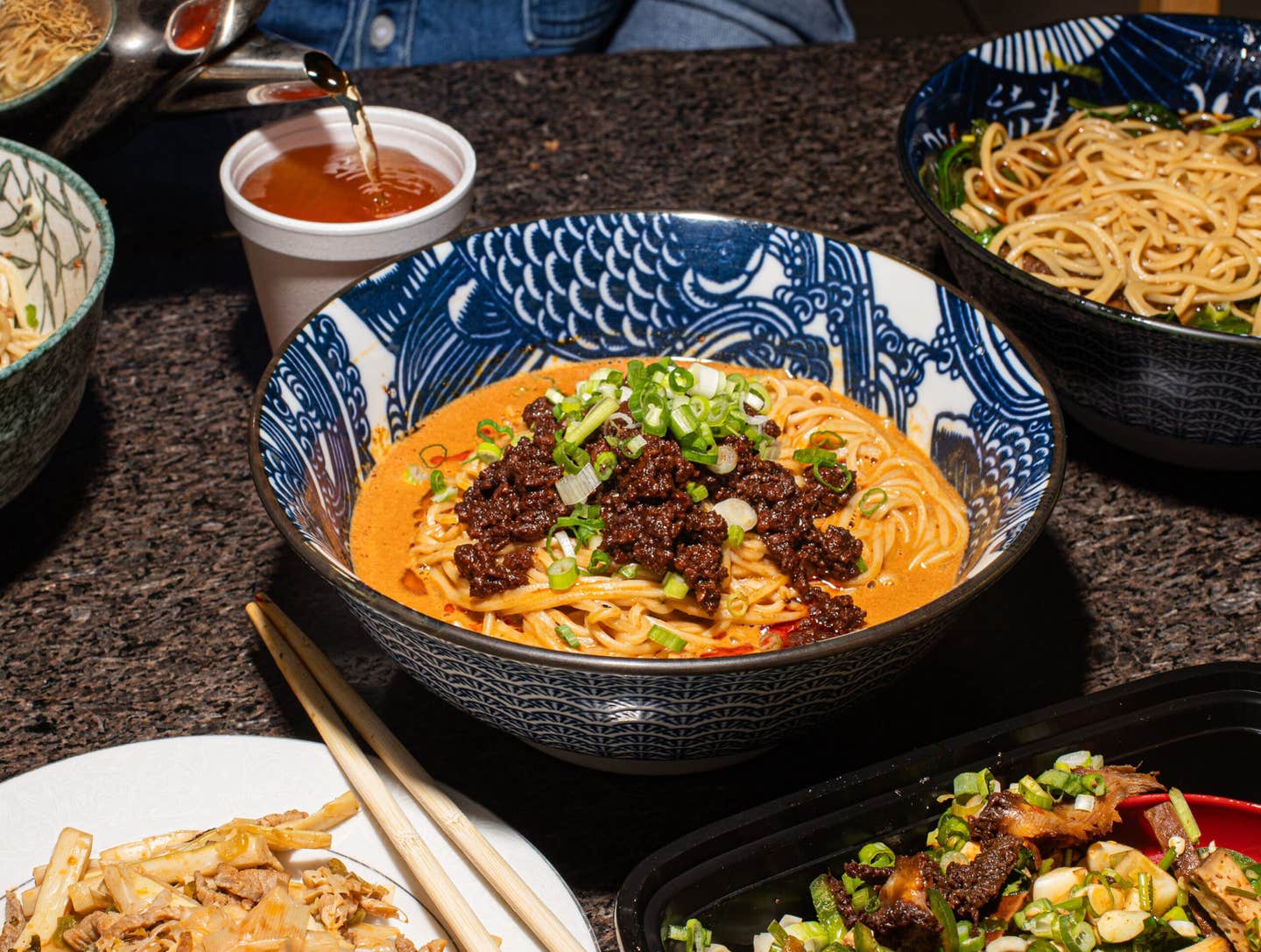
An Insider’s Guide to the Pilgrimage-Worthy Asian Restaurants of San Gabriel Valley
From Cantonese dim sum to spicy Uyghur laghman noodles, this region northeast of Los Angeles boasts more cuisines than we can count.
Pull into a parking lot in San Gabriel Valley, then take a whiff: Is that five spice tickling your nostrils? Hoisin wafting out that window? The smell of dumplings sizzling in a skillet? As anyone who’s traveled to this corner of Southern California knows, hiding among the drab, sand-colored strip-mall storefronts are some of the nation’s most outstanding Asian restaurants.
Situated 15 minutes from downtown Los Angeles, these eateries often catch diners’ eyes with bright neon signs and “Best Of” stickers pasted on the doors. Step inside, and you might find soups brimming with braised meats and handmade noodles, baskets of steamed baos, or dim sum carts overflowing with dainty mouthwatering morsels.
In the mid-1800s, citrus farming brought the first wave of Chinese immigrants to San Gabriel Valley (aka SGV). They were mostly from Guangdong (formerly Canton), which led many Americans at the time to believe Cantonese food was representative of all Chinese food. That false impression was cemented by the Chinese Exclusion Act of 1882, which barred immigration from China altogether. It would be nearly a century before SGV got its next major influx of Asian immigrants—primarily from Hong Kong, Taiwan, and Vietnam—who joined the Mexican, Filipino, Japanese, and South Asian Americans who had already made the area their home.
In the 1970s, new restaurants began cropping up celebrating the cuisines of Hunan, Sichuan, Shanghai, Taishan, Taiwan, and beyond. And recently, wealthy Chinese investors have further changed the face of SGV’s food scene by opening a smattering of high-end dining spots.
An Angeleno of 27 years, I began my exploration of the area’s food scene in college with late-night rides to boba tea shops and to Hong Kong-style cafes to study for midterms. These days, you’re more likely to find me devouring Emperor’s jar soup, Uyghur big plate chicken, or Asian American mashups like Bopomofu’s honey-walnut shrimp burger. Whatever you’re in the mood to eat, you can probably find it in SGV. Here are the Asian restaurants I’m head-over-heels for.
9148 Las Tunas Dr., Temple City
(626) 291-2295
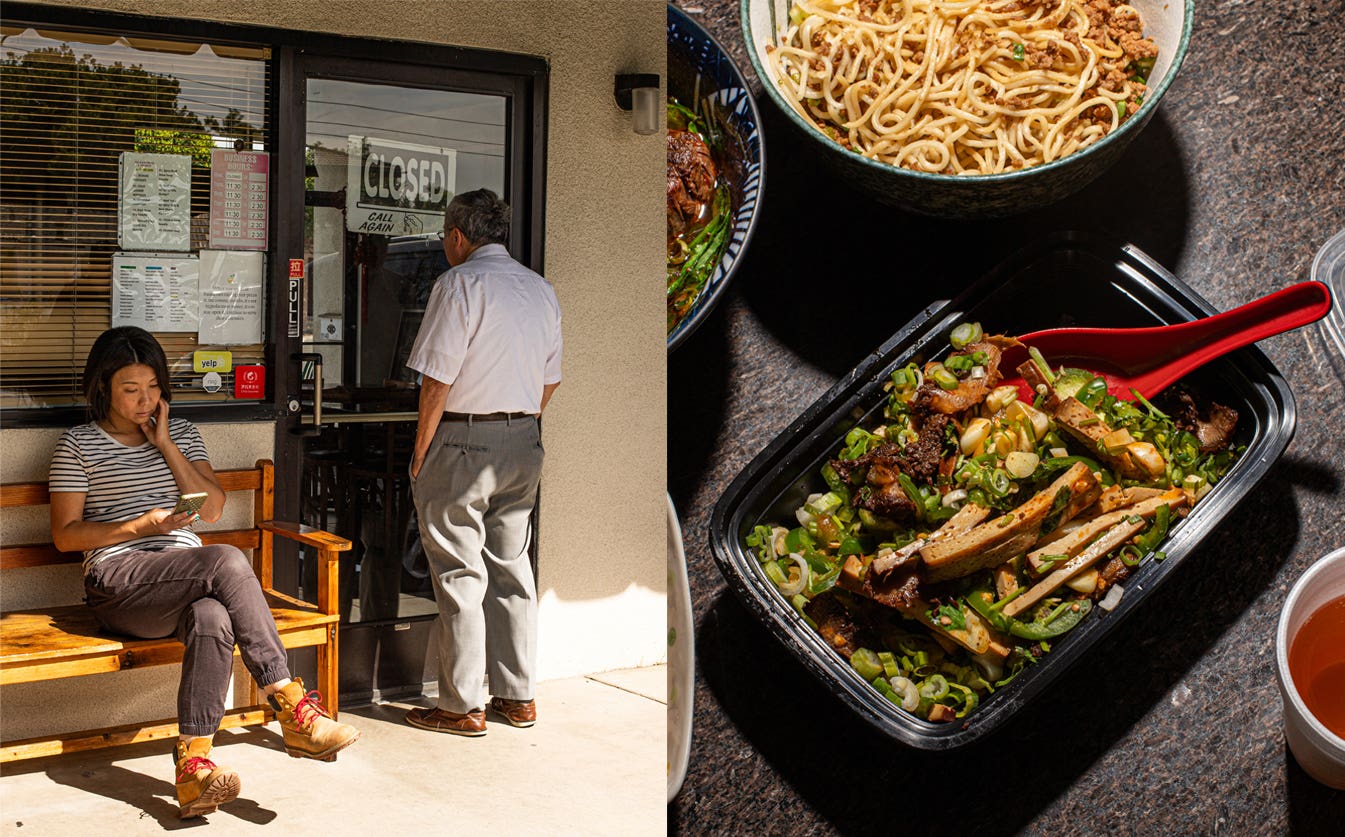
This popular and efficient Taiwanese noodle house opens just three hours for lunch because its handmade threads are sold out by the afternoon. After starting with refrigerator-case appetizers such as shredded tofu with celery and carrots and smashed spicy cucumbers, move on to the beef noodle soup (the national dish of Taiwan, natch), whose springy noodles rest in a complex broth and come topped with flank steak and bright green spinach. If you’ve got room for more, order more noodles—preferably the ones topped with minced pork and fermented bean sauce. (Be sure to bring cash, or be ready to pay via Venmo or Zelle.)
704 W. Las Tunas Dr. #5, San Gabriel
(626) 281-9888
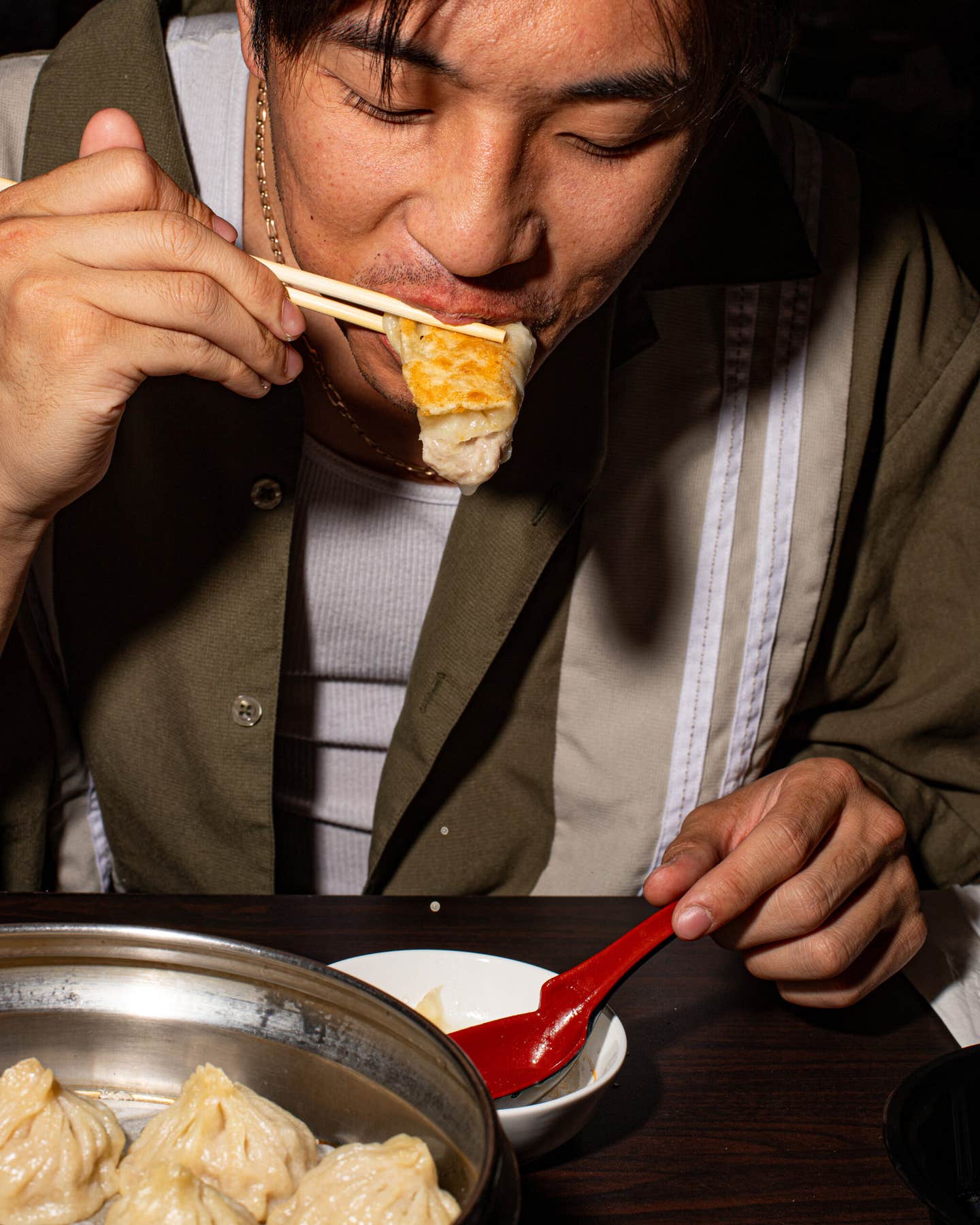
Hui Tou Xiang serves tender dry noodles and rich noodle soups, but pan-fried pork dumplings are their strongest suit. They stand out for their rectangular shape, which makes for more crispy surface area. The pork filling is equally delightful with its touch of unexpected sweetness. Then there are the soup dumplings, with their impressive number of pleats, delicate yet sturdy wrapper, and gloriously splurty center. Basic ambiance and decor—pleather booths, hardback chairs, fluorescent lighting—let the food do the talking.
815 W Las Tunas Dr., San Gabriel
(626) 308-0803
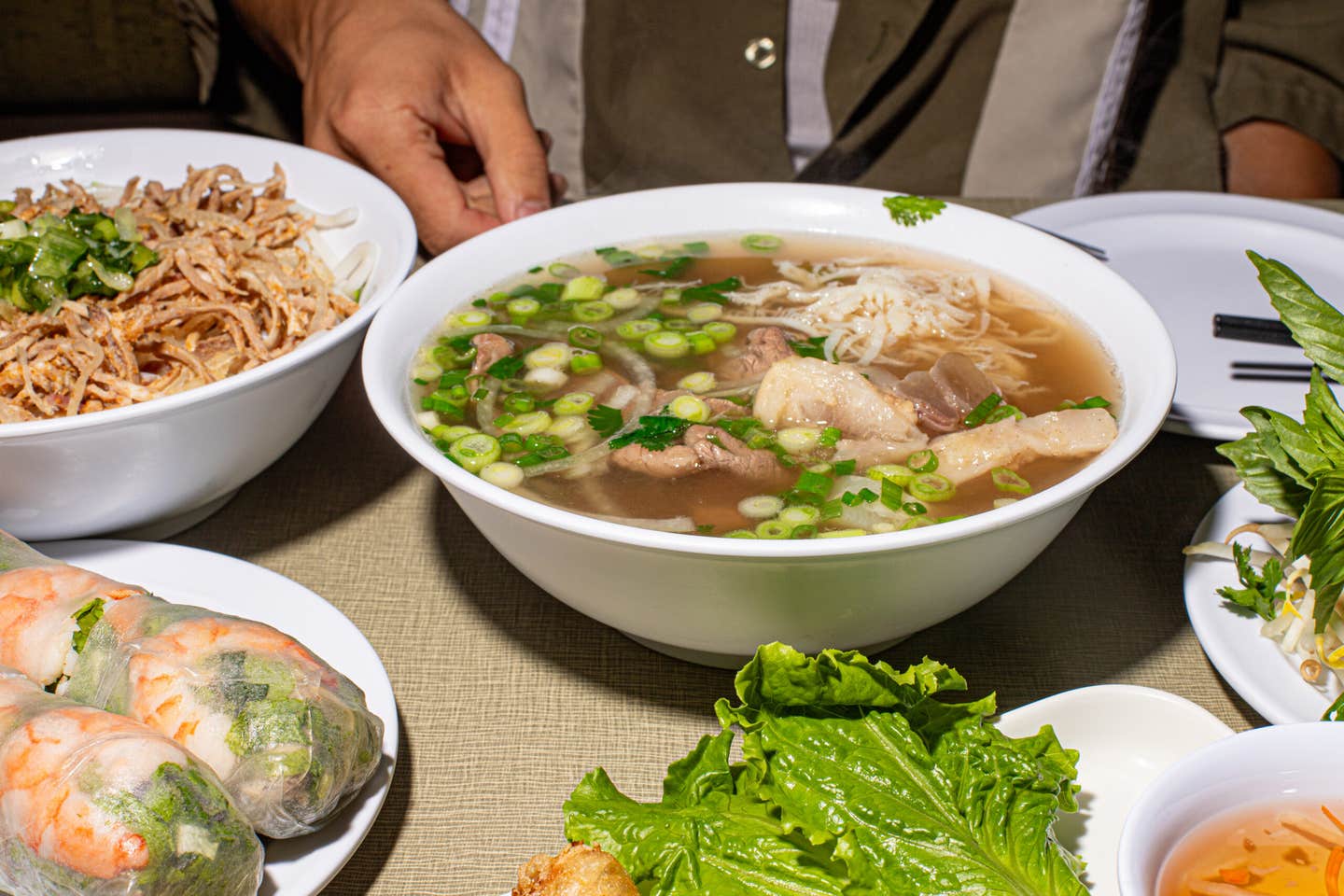
Many pho spots look alike in this corner of SoCal, but it’s a mixed bag when it comes to how good the broth is. At Golden Deli, it’s just right—the clear soup sweetly beefy and aromatic with ginger, onions, star anise, cloves and cinnamon. Top your bowl with tender slices of rib eye and brisket, and if you like, tendon and/or tripe. A must-order pho precursor is chả giò, fried spring rolls, which are spectacularly crispy. The best way to eat these is by wrapping them in a lettuce leaf and herbs, which make a crisp, cool counterpoint to the juicy filling of pork, carrots, mushrooms, and glass noodles. Since its first location opened in 1981, Golden Deli has become an SGV institution, with long lines that are worth the wait.
518 W Las Tunas Dr., San Gabriel
(626) 289-5998
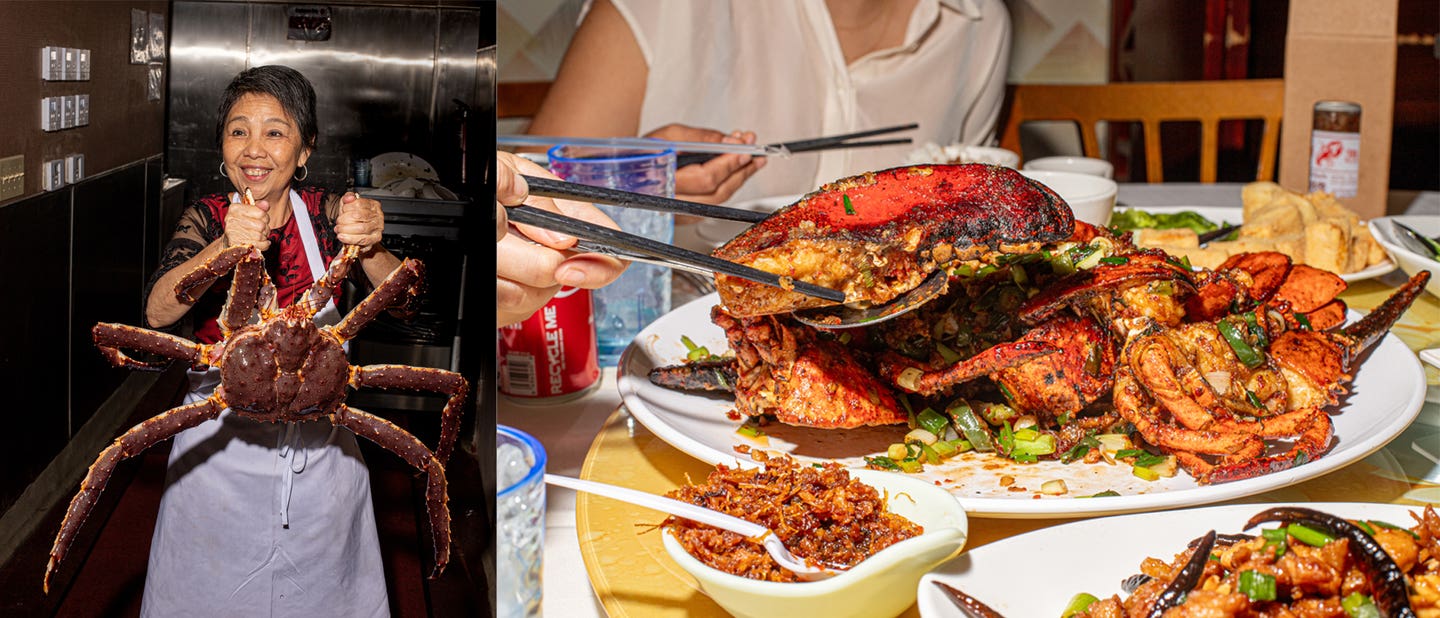
Newport Seafood is known for its quality seafood, often seen swimming in its tank before you order it. The signature dish is wok-fried, sauce-coated lobster with green onions, garlic, jalapeños, black pepper, and butter, a recipe developed by co-owner Ly Hua reminiscent of his childhood in Phnom Penh. A close second is the baked shrimp and crab, served crisp and eaten shell-on. Speaking of shells, one of my go-to orders is clams with “spicy hot sauce” whose name is as misleading as it is redundant, since there’s little heat to report but plenty of aromatics like basil, garlic, and ginger. Hua and wife Wendy Lam have roots in Guangdong but were born in Cambodia; both sojourned through different countries to eventually land in Southern California, where they met. Through their journeys you can taste your way through the restaurant’s menu filled with Chinese, Vietnamese, Thai, and Cambodian influences.
404 S Atlantic Blvd., Monterey Park
(626) 282-2323
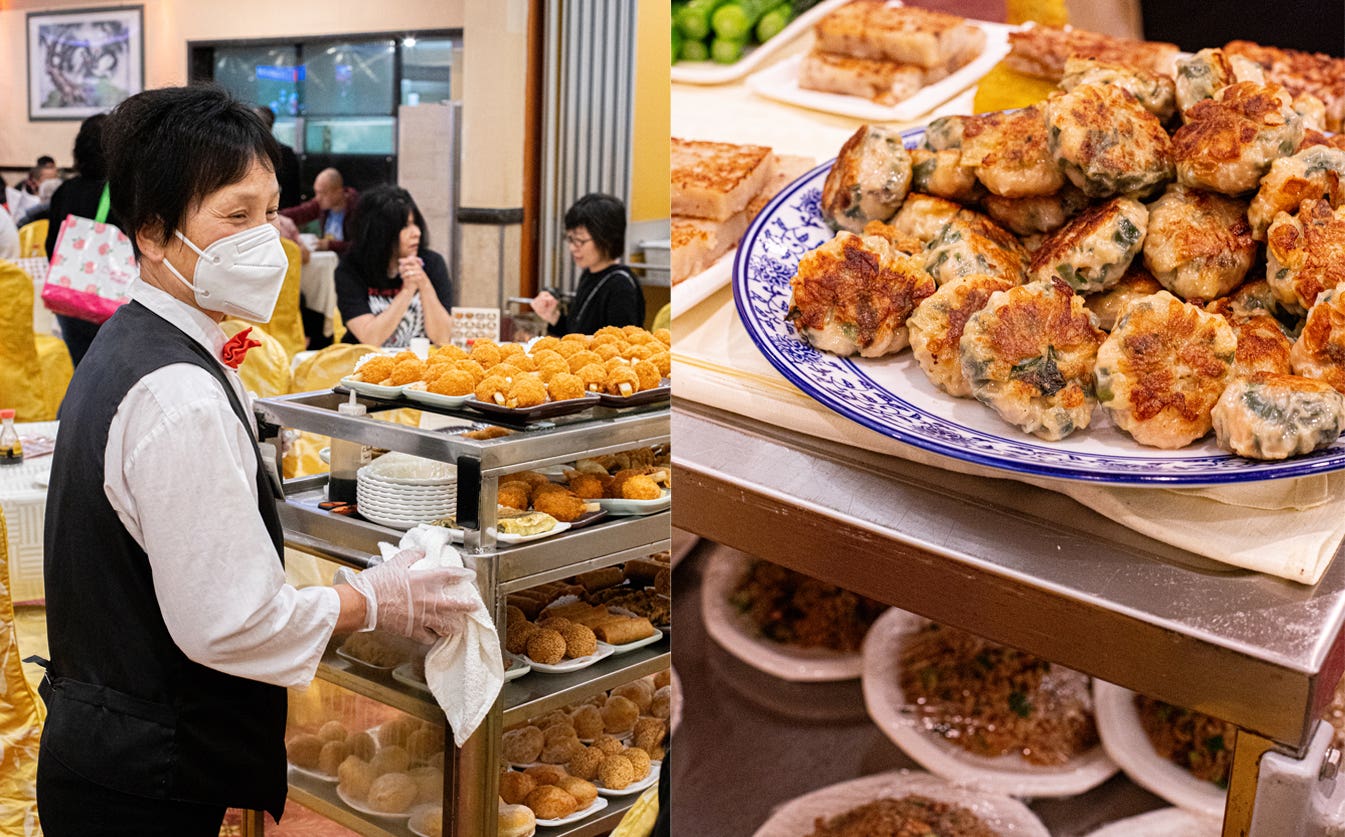
Dim sum in SGV has come a long way, starting from roving dim sum carts and moving into made-to-order dishes brought hot from the kitchen. NBC Seafood Restaurant is one of the few remaining push-cart holdouts. You know the type: white tablecloths, lazy Susans, satiny gold chair covers that drape over the carpeted floor. I love the bustle and hum of the place—the servers hawking their wares, the whine of turning cart wheels, the din of diners’ conversations. The classics are all you want at NBC, and the classics are what you’ll get: crystal shrimp dumplings; open-faced pork, shrimp and mushroom dumplings; steamed pork ribs; steamed and baked buns filled with chicken or pork and pan fried radish cakes. Just be ready to wave and point when a dish catches your eye—this is no time to be shy.
112 W Main St., Alhambra
(626) 281-1035
This second-generation restaurant by Chris Yang and Maggie Ho is a brunch hotspot five days a week and a dinner destination for four, but you can always count on products from local purveyors: This time of year, it’s all about kabocha squash from Yao Cheng Farm and dry-aged barramundi from The Point. Traditional dishes like congee and cold sesame noodles are my go-tos, as is the strawberry amazake smoothie made with Chavez Farms strawberries and oolong “Fresca.” At dinner, Hainan fish rice is a creative spin on what’s usually a boiled chicken dish, with added crunch thanks to crispy fish skin. Dan dan campanelle delivers perfect QQ, and the smoked char siu pork jowl is perfectly tender and sweet, capped off with an outer char. Yang’s wine list is singular and exciting, featuring unexpected bottles such as Domaine Bükk’s “Litro Libre” made with zenit grapes from Hungary. A great reason to make a reservation for the weekend is wine nights: Flights are $34 and consist of three generous pours.
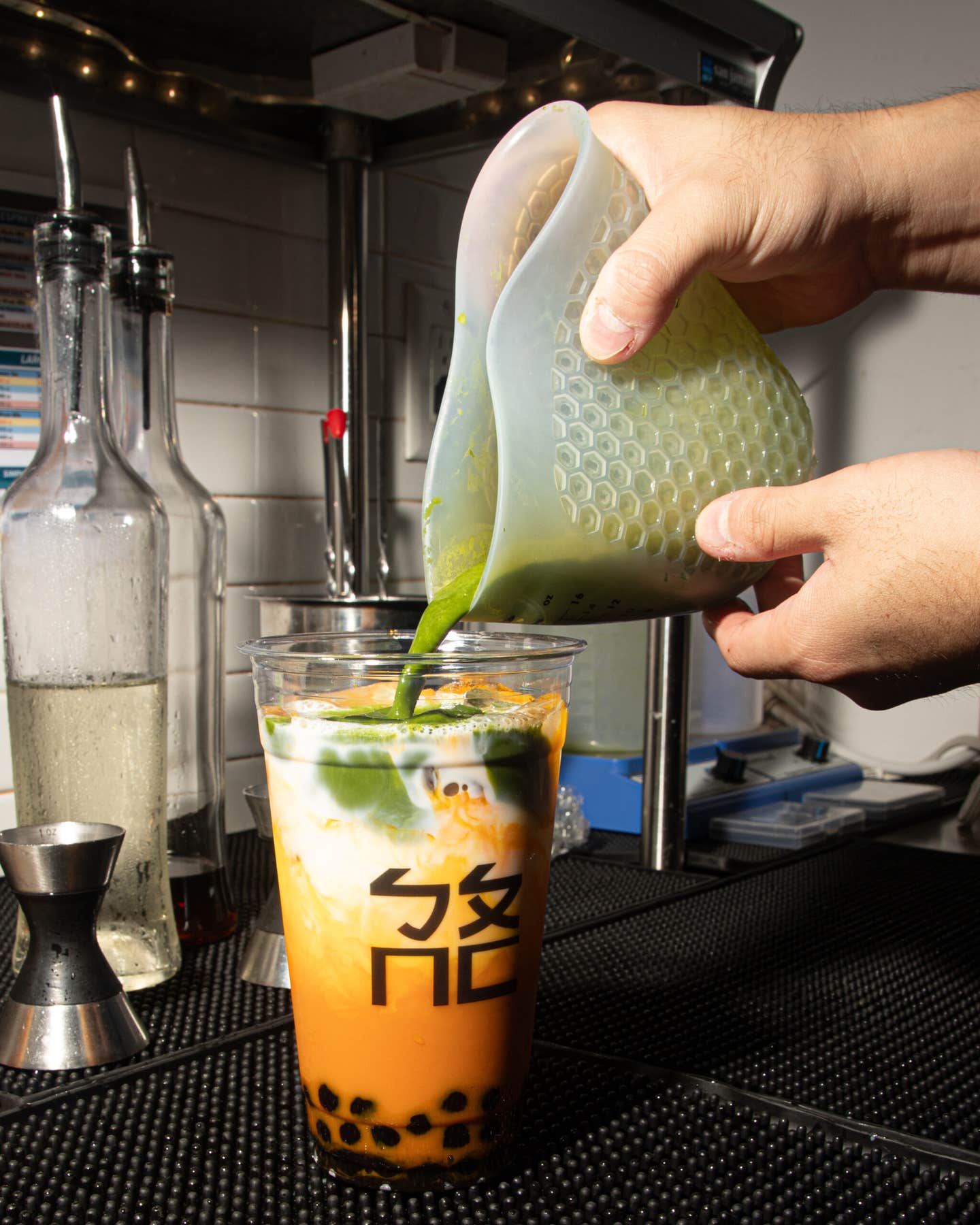
Bopomofo is the quintessential SGV Cafe: It’s a casual cafe by and for second-generation Asian Americans and a side project of YouTube sensation Philip Wang of Wong Fu Productions and Eric Wang. They serve inventive beverages like mint matcha lattes and lychee berry bliss, the latter made with calamansi juice, strawberry purée, and coconut milk. If you’re peckish, consider my favorite menu item, the honey-walnut shrimp burger slathered with wasabi-yuzu sauce and topped with candied walnuts, pickled jalapenos, and red onion. There’s also your standard variety of popcorn chicken, crispy niblets dusted in house seasoning, available in white or dark meat and furnished with Thai basil aïoli.
651 W Duarte Rd. Ste. F, Arcadia
(626) 446-0886
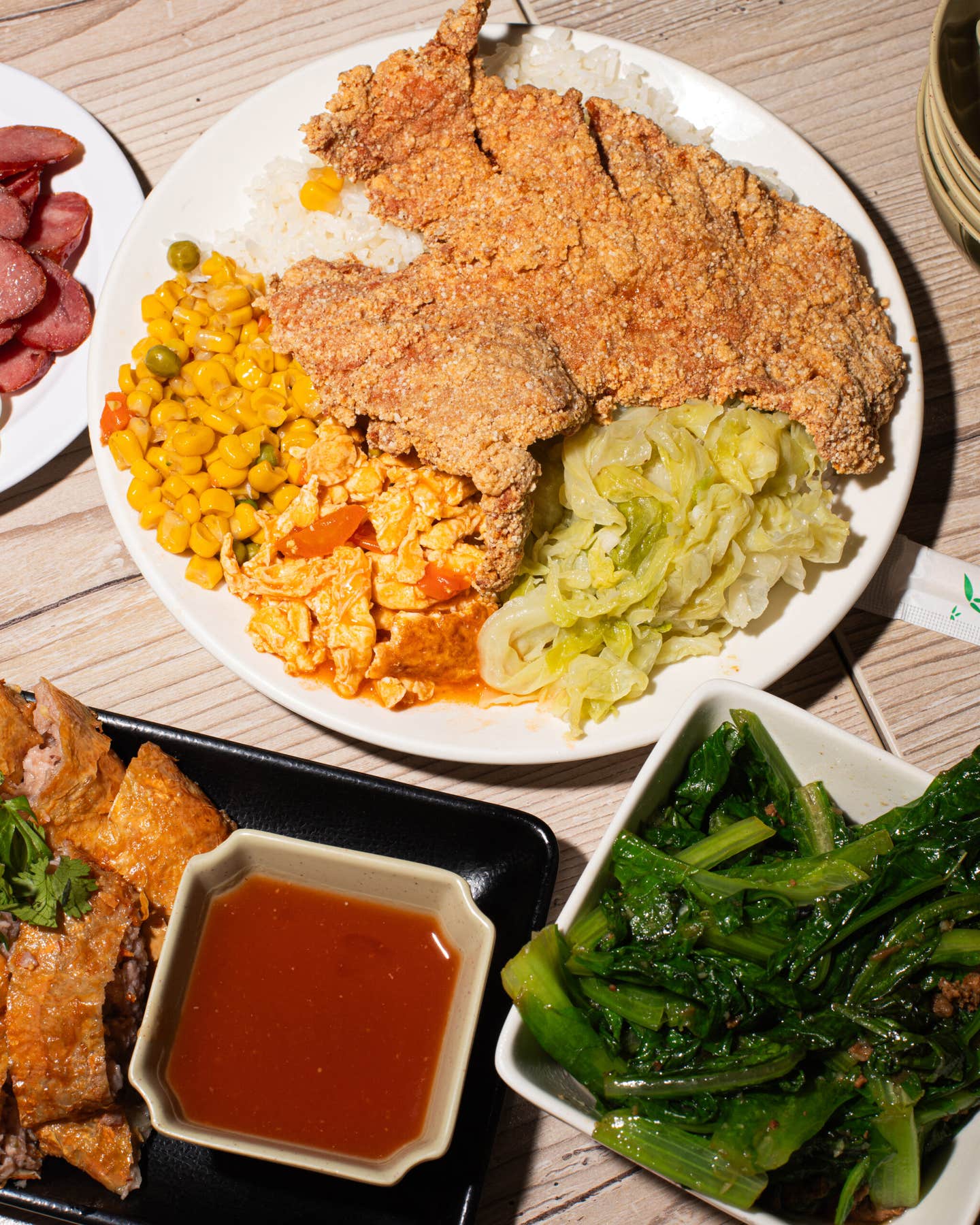
SinBala has long been the local standby for Taiwanese comfort food and desserts. The classic order (from the enormous menu) is the pork chop over rice, a battered-and-fried behemoth with a crunchy layer that gives way to tender, juicy meat. There’s also the glutinous meatball, a staple of southern Taiwan, topped with a sweet, orange-tinged garlic soy sauce. Every bite is a delectable combination of pork, wood-ear mushroom, and lip-smacking sauce. After all that richness, a refreshing dessert is in order: Shaved ice topped with condensed milk and your choice of mochi balls, grass jelly cubes, red beans, and boba.
9055 Las Tunas Dr. #105, Temple City
(626) 286-1999
Bistro Na’s introduced SGV to the Imperial cuisine of the Qing Dynasty, representing a new era of deeper-pocketed Chinese immigration to the area. Inside its red- and gold-walled dining room, guests can feast on dishes that were literally made for royalty. Dishes by Bejing-born chef Tian Yong include extraordinarily crispy shrimp in its rendition of walnut shrimp and Emperor’s jar soup, a blend of beef tendon, mushroom, fish maw, quail egg, and sea cucumber suspended in concentrated chicken stock. The restaurant serves only eight Peking ducks per night, and to claim one, you’ll want to call ahead. The bird’s skin has a uniform thickness that almost shatters when you bite into it. Chef Yong carves it delicately and serves the dish himself in two stages—first with only sugar, then in hand-rolled wraps filled with cucumber, green onion, and homemade plum sauce
742 W Valley Blvd., Alhambra
(626) 782-7555
Before this Alhambra restaurant opened in 2019, there were hardly any Halal restaurants serving SGV’s Uyghur community. Here you’ll find dishes seasoned with star anise, cumin, black pepper and cardamom—signature flavors of China’s Turkic Muslim minority. Big-plate chicken, the standout main, features flat noodles, potatoes, bell peppers, leeks, and chiles in a spicy, hearty sauce. Equally hard to pass up are the hand-crimped beef and onion manti and the hand-pulled laghman noodles with stir-fried beef and vegetables. Televisions show landscape shots of the vast and diverse landscape of Xinjiang province, and make you reflect on this deep-seated culture fighting eradication.
975 N Michillinda Ave., Pasadena
(626) 510-6286
This Pasadena gem that opened in 2022 brings SGV Cantonese cuisine full circle. Though you’ll spot classic preparations—such as dim sum staples like juicy pork dumplings and egg yolk buns or salt and pepper tossed calamari—there’s a new emphasis on seasonality and quality of ingredients. A case in point is chef Peter Lai’s chicken stuffed with shrimp paste distinguished by phenomenally crispy skin. Don’t miss the stir-fried vegetables, including savory luffa tossed with salted egg yolk, and wokked chayote with minced pork and pickled olives. If you’re feeling adventurous, ask your server what the specials are, but don’t veer too far off: While the menu is vast and includes modern takes, experience has shown me that the classics are where it’s at.
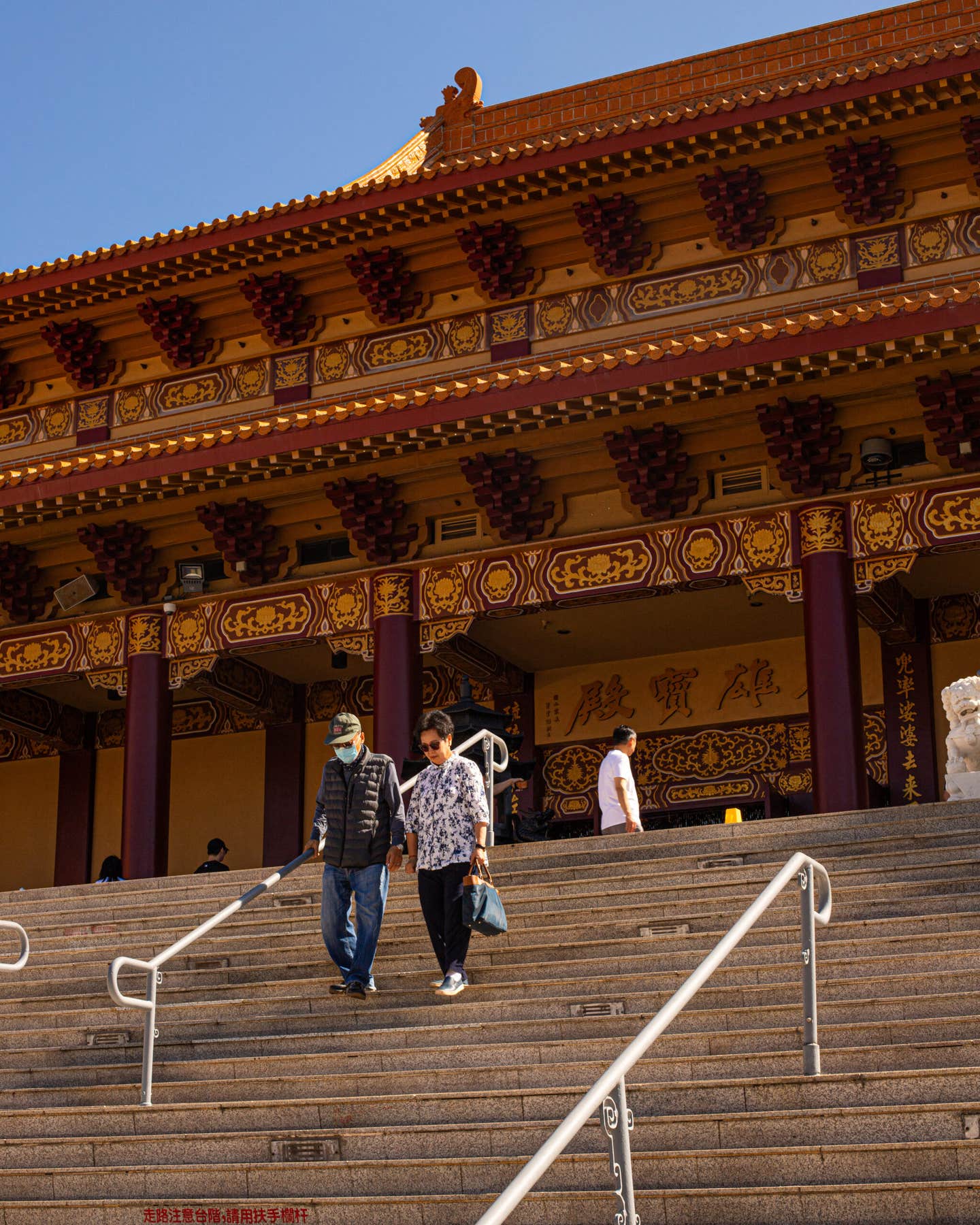
In the Easter SGV enclave of Hacienda Heights lies one of the largest Buddhist temples in North America. Hsi Lai, which means “coming west,” is a breathtaking, 15-acre complex with gardens and temples built in Ming and Qing dynasty architectural styles. Every day, they put out a humble $10 vegetarian buffet as a service to the community. You’ll find fairly standard dishes such as tempura vegetables; sesame tofu salad; vegetable broth; stir-fried noodles and cut fruit. The food is nothing to write home about (and may be bland to some, since it’s allium-free due to religious restrictions), but the compound is worth visiting for its meditative serenity alone. The temple encourages visitors to take only what they can eat, so be mindful of waste.
Keep Reading
Continue to Next Story
